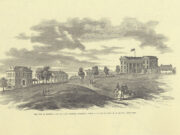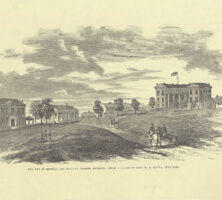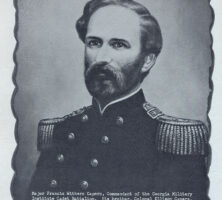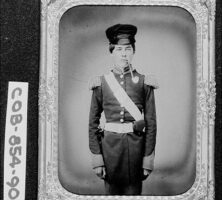Established in Marietta and opened to students in July 1851, the Georgia Military Institute (GMI) was the principal source of education for new engineers and teachers in the state during the decade prior to the Civil War (1861-65). Originally funded by private subscription and donations, GMI began its official relationship with the state in 1852, when the legislature chartered the school and presented it with muskets, swords, and a battery of four cannons. Although GMI began with only three instructors and seven students, it quickly attracted a large number of cadets from Georgia’s wealthiest families. Between 1853 and 1861, GMI’s student body fluctuated between 150 and 200 cadets.
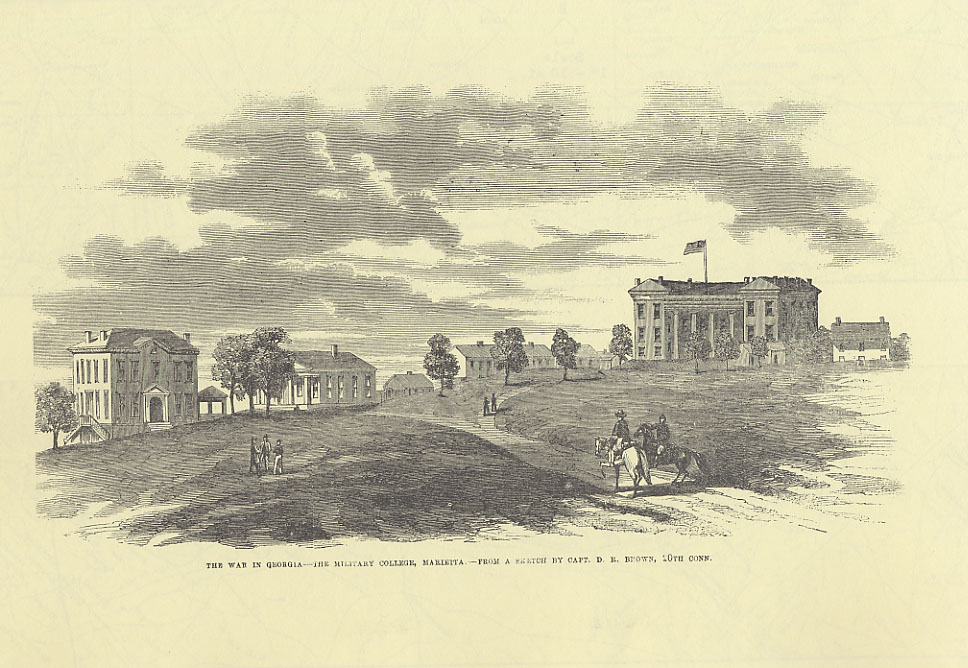
From History of the Georgia Military Institute, by Bowling C. Yates
GMI’s 110-acre campus included a parade ground, an academic building, four student barracks, and a residence for the school superintendent. Like most southern military schools of the late antebellum period, GMI based its curriculum on the course of study at the U.S. Military Academy at West Point, New York. Discipline at the institution was strict, similar to that at the Virginia Military Institute in Lexington, Virginia, and the Citadel in Charleston, South Carolina. Between 50 and 75 percent of students left GMI each year because of the tough physical and academic standards.
Sometime during the 1850s the state legislature began subsidizing the education of ten cadets yearly as a way of providing qualified engineers and teachers for state projects. Upon graduation, those cadets were required to perform two years of service to the state.
GMI’s existence was threatened in 1861, when Georgia seceded from the Union and Governor Joseph E. Brown called upon GMI superintendent Francis W. Capers to provide drill instructors for the new Georgia volunteers then flooding training camps in the state. Other GMI cadets left to serve in newly forming Southern armies in 1861 and 1862. The school survived by admitting more students, but the Confederate government’s April 1862 Conscription Act left cadets susceptible to the draft, again threatening GMI’s survival. Brown interceded on behalf of GMI and protected the institution by making it home to the state’s engineer corps. Brown appointed Capers as chief engineer of Georgia with the military rank of major.
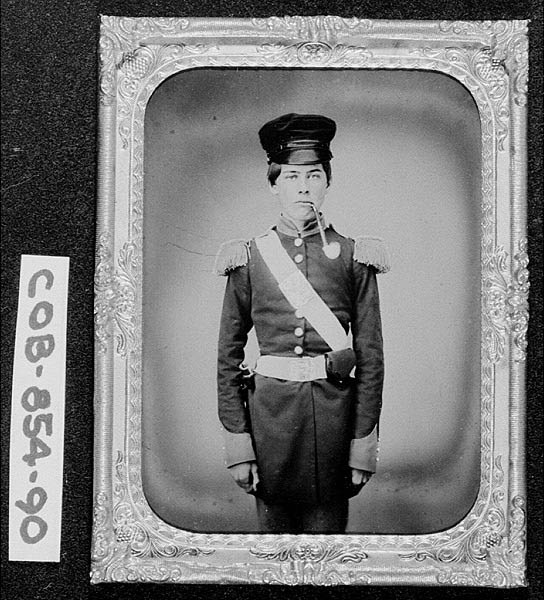
Courtesy of Georgia Archives.
Although the cadet battalion spent most of the Civil War serving as funeral details, provost guards, prisoner escorts, and drill instructors, the arrival of Union general William T. Sherman’s troops in spring 1864 forced Georgia officials to reassign every available man to the active defense of the state. Desiring to see his cadets enter service as a volunteer unit and not under the draft, Capers led them into the regular Confederate army in May. As Sherman’s army approached Dalton, GMI cadets were assigned to active duty in the Confederate Army of Tennessee. Although Sherman’s troops burned the GMI buildings in Marietta, the cadet battalion entered active service against the Union men and contested the Union invasion along the Chattahoochee River in July and during the siege of Atlanta in August.
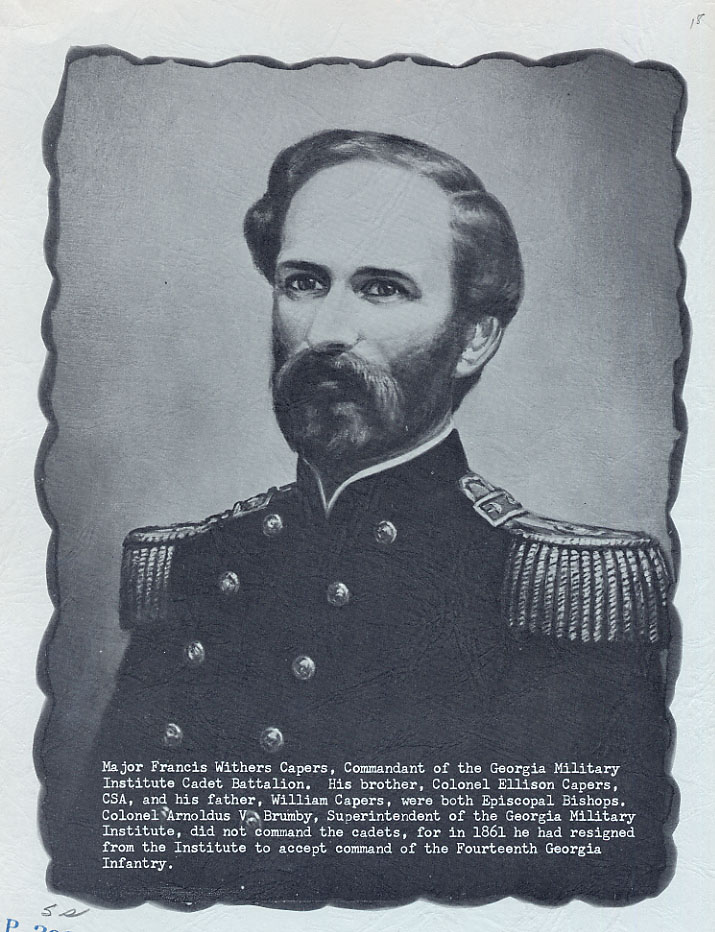
From History of the Georgia Military Institute, by Bowling C. Yates
During the late summer and fall of 1864 Brown reassigned the GMI cadets to protect the state capital at Milledgeville from Union cavalry raids. In mid-November 1864 the cadets left Milledgeville as part of a ragtag group of militia and convicts hoping to stop Sherman’s march to the sea. Despite their efforts Savannah fell in December, and the GMI battalion spent the remainder of the war acting as guards in Milledgeville and Augusta. The battalion officially disbanded on May 20, 1865.
After the war GMI alumni and Capers made several attempts to reopen the school, but all attempts failed to garner the needed financial support from the state. The Georgia legislature instead used the limited funds available during Reconstruction on public education at nonmilitary schools.


